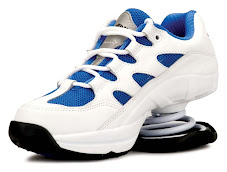 In a recent survey for the American Podiatric Medical Association, 53 percent of respondents reported foot pain so severe that it hampered their daily function. On average, people develop pain in their 60s, but it can start as early as the 20s and 30s.
In a recent survey for the American Podiatric Medical Association, 53 percent of respondents reported foot pain so severe that it hampered their daily function. On average, people develop pain in their 60s, but it can start as early as the 20s and 30s. Yet, even armed with this knowledge, most people do not take preventative measures to care for their feet.
I was recently reading a very informative article by L. Tarkan from The New York Times. In it she discusses the most common foot problems that are associated with aging and whether you should take actions now to prevent them. Here are just a few:
Are you overweight?
The force on your feet is about 120% of your weight. “Obesity puts a great amount of stress on all the supporting structures of the foot,” said Dr. Bart Gastwirth, a podiatrist at the University of Chicago. It can lead to plantar fasciitis and heel pain and can worsen hammertoes and bunions. It’s also a risk factor for diabetes, leading to the next question.
Are you diabetic?
Being farthest from the heart, the feet can be the first part of the body to manifest complications like poor circulation and loss of feeling, both of which can lead to poor wound healing and amputation. Diabetics should have their feet examined annually by a doctor and avoid shoes that cause abrasions and pressure.
Do you have flat feet or high arches?
Either puts feet at risk. A flat foot is squishy, causing muscles and tendons to stretch and weaken, leading to tendonitis and arthritis. A high arch is rigid and has little shock absorption, putting more pressure on the ball and heel of the foot, as well as on the knees, hips and back. Shoes or orthotics that support the arch and heel can help flat feet. People with high arches should look for roomy shoes and softer padding to absorb the shock. Isometric exercises also strengthen muscles supporting the foot.
Do your shoes fit?
In the podiatric association’s survey, more than 34 percent of men said they could not remember the last time their feet were measured. Twenty percent of women said that once a week they wore shoes that hurt, and 8 percent wore painful shoes daily. Feet flatten and lengthen with age, so if you are clinging to the shoe size you wore at age 21, get your feet measured (especially mothers — pregnancy expands feet).
Do you wear high heels?
“The high heel concentrates the force on the heel and the forefoot,” Dr. Gastwirth said. Heels contribute to hammertoes, neuromas (pinched nerves near the ball of the foot), bunions and “pump bump” (a painful bump on the back of the heel), as well as toenail problems. Most of the time, wear heels that are less than two and a half inches high.
- Arthritis and other common joint pains
- Lower back pain and sciatica
- Heel spurs, plantar fasciitis, and metatarsal pain
You can check out many of their testimonials here: http://www.zcoil.com/testimonials

No comments:
Post a Comment